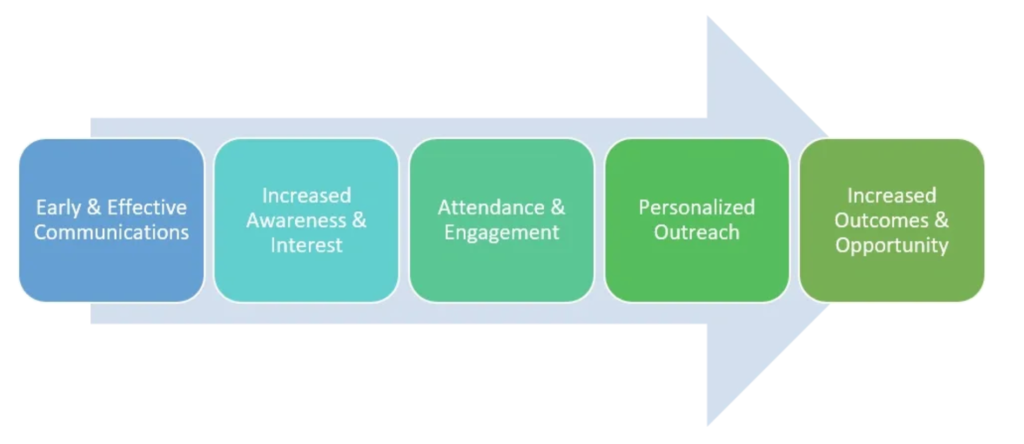Blog: Clearly Communicating Financial Aid Concepts to Families

ASA recently released its evaluation of the National College Attainment Network’s (NCAN’s) FAFSA Completion Challenge, which sought to increase district-wide FAFSA completion rates through concerted efforts among consortia of high schools, colleges, and community-based organizations in 25 cities. ASA identified a number of essential conditions and promising practices among successful sites, including peer advising and data-based tracking and targeting, and hopes the lessons will be valuable to practitioners across the country who wish to increase the college-going rates of their students.
The Largest Barrier
In addition to promising practices the report identified a number of challenges to further increasing FAFSA completion rates. Parental engagement was the largest challenge sites faced, and specifically, family distrust of financial aid forms and misunderstanding of financial aid concepts was a difficult hurdle for sites to overcome within the year of the grant. This finding agrees with those of the consumer testing studies ASA has conducted for National Association of Student Financial Aid Administrators (NASFAA).
Common Findings
In both the NCAN and NASFAA studies, many students and parents initially thought they could only get federal assistance in the form of loans – they did not always understand that they can access free Pell Grants that do not need to be paid back. And, many lack an understanding of concepts such as work-study. In fact, our NASFAA work has consistently found that families often do not consider loans or work-study to be “financial aid,” as it is categorized among higher education professionals.
Early & Effective Communications
To help families better understand the importance of college and financial aid, both studies recommend improved communications to families:
- Educate Early – FAFSA completion increases don’t happen overnight. Educators and outreach professionals must communicate to students and their families early – before high school – about the benefits of college and financial aid, to engrain it as part of the culture and expectations.
- Communicate Clearly – Students and parents across focus groups in both studies indicated they want financial aid terms communicated as simply as possible. They are consumers, and as such, want the straightforward, bottom line: how much will they have to pay? Concepts that financial aid professionals find useful, such as expected financial contribution (EFC), are meaningless to consumers when making big decisions about attending college.
- Explain the fine print – Students and their parents may not understand other key concepts, such as the difference between subsidized and unsubsidized loans, the pros and cons of various types of awards, and the longer-term costs. All of these concepts are important and will have implications for their lives and future decisions beyond college. Total transparency is key.
Taken Together
The guidelines above for early and effective communications will set the stage for increased awareness and interest. Then, when schools and organizations provide FAFSA advising services and events, families will attend and be engaged. Finally, having trained FAFSA advisors sit down with students to guide them through the process – providing personalized outreach – will help ensure that students apply to, and enroll in, postsecondary education. Once students and their families can see college as a real and rewarding opportunity, and understand the path to get there, will they realize increased outcomes and opportunity.


